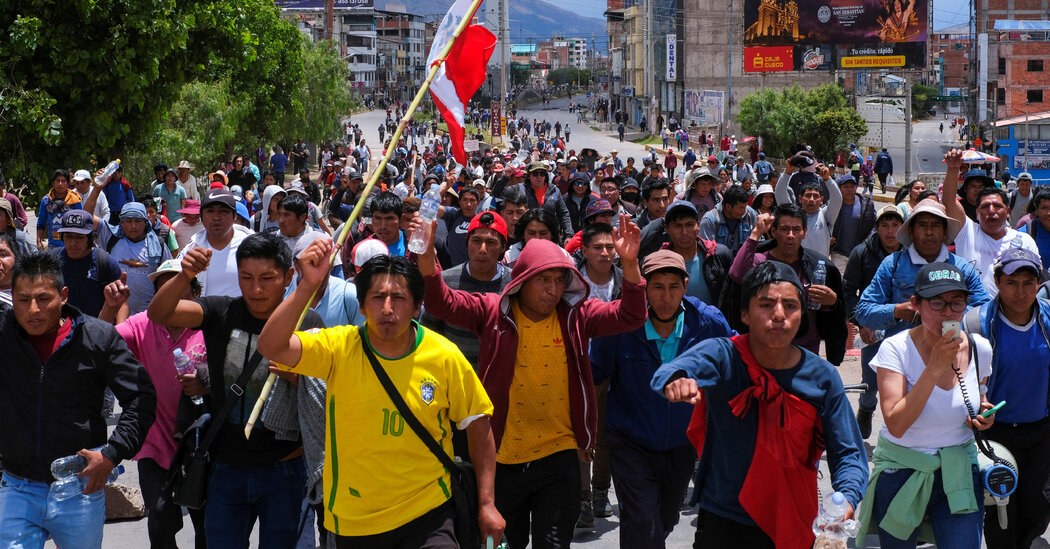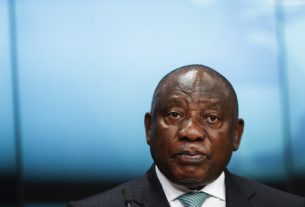|
Getting your Trinity Audio player ready...
|
LIMA, Peru — The government of Peru said on Wednesday that it would declare a nationwide state of emergency as it sought to control widespread violence resulting from the ouster of the country’s elected president, an extraordinary measure even in a country accustomed to political upheaval and protest.
The measure, which has not yet been enforced, would suspend the rights of assembly and freedom of transit, among other civil liberties, for 30 days, said Alberto Ótarola, the country’s defense minister.
The move is the most significant escalation in a crisis that erupted last Wednesday when the president, Pedro Castillo, tried to dissolve Congress, which he had been feuding with since taking office last year.
Hours later, Peru’s Congress impeached him and Mr. Castillo was arrested, setting off waves of angry protests by supporters who believe his removal was illegitimate.
Several historians said that while past governments have declared states of emergency in certain parts of the country, the measure had not been used this widely since the 1990s, when the country was brutalized by a Marxist terrorist group called the Shining Path.
What to Know About the Ousting of Peru’s President
Who is Pedro Castillo? The left-wing Peruvian president was elected in 2021 after campaigning on a promise to address the country’s chronic inequality. But in less than a year and a half in office, Mr. Castillo has been plagued by corruption scandals. Peru’s Congress voted to oust him after critics accused him of attempting a coup.
Speaking to reporters outside the presidential palace on Wednesday, the country’s new president, Dina Boluarte, who took office just a week ago, called for calm.
“Peru cannot overflow with blood,” she said, and then referenced the Shining Path days. “We have already experienced that experience in the 1980s and ’90s and we do not want to return to that painful story that has marked the lives of thousands of Peruvians.”
The state of emergency was announced by Ms. Boluarte’s defense minister on Wednesday. It is expected to go into effect after the president signs it later on Wednesday.
Mr. Castillo’s attempt to dissolve Congress and install a government that would rule by decree was denounced by both opponents and many of his allies as a coup attempt. Ms. Boluarte, the former vice president, was sworn in that same day.
The public reaction to the swift transition was at first relatively muted. But in recent days protesters have emerged en masse, mostly in rural areas, staging attacks against police stations, courthouses, factories, airports and a military base.
At least six people have died, most of them young protesters, and more than 100 police officers have been injured, according to Peruvian authorities.
Peru’s police recently said that since last Wednesday 71 people have been arrested in the departments of Lima, Apurímac, Arequipa, Ica and La Libertad, accused of disturbing the public peace.
Mr. Castillo, a former schoolteacher and union activist from a poor rural family, galvanized many Peruvians like him with his leftist platform during last year’s election. Many of his supporters said they were frustrated by a system designed only to help the elite class.
But after taking office, he struggled to govern, his government marred by allegations of corruption, incompetence and mismanagement.
After Mr. Castillo’s arrest last week, his supporters accused the political elite of driving him toward political suicide, and said the establishment never gave him a chance to govern successfully. In interviews, some said they felt they had been robbed of their vote, pushing them to the streets.
José Godoy, a Peruvian political scientist, was critical of the decision to declare a state of emergency.
“It verifies that measures for force come before dialogue with the citizenry,” he said. “This diminishes Boluarte’s credibility.” Mr. Godoy added that the decision would also be a blow to the economy.
“It seems disproportionate to me,” he said. “I think it should only apply in places where there’s really convulsion.”
Mitra Taj reported from Lima, Peru, and Julie Turkewitz from Bogotá, Colombia.



